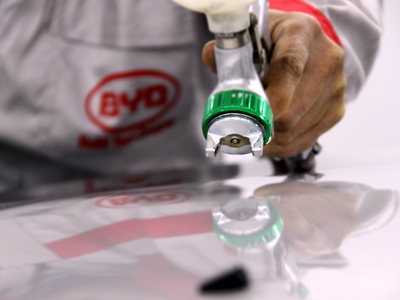Types of Car Scratches and How to Fix Them
One of the perennial challenges that car enthusiasts face is the inevitable occurrence of scratches, ranging from surface blemishes to more profound marks that breach the layers of paint. These scratches, like battle scars, can appear unexpectedly, tarnishing the polished finish and demanding attention.
As you invest time and effort into creating a perfectly customized space for your automotive treasures, understanding the diverse types of car scratches is crucial for effective and appropriate repairs. From simple surface scratches to more complex deep paint scratches that necessitate professional expertise, below are the most common car scratches and how to fix them:
1. Surface Scratches
Surface scratches are the least severe type and typically only affect the clear coat of the car's paint. These scratches are often caused by light contact with a soft object, such as brushing against a tree branch or incidental contact with a shopping cart. Surface scratches are noticeable but don't penetrate the color layer of the paint.
Consider using a polishing compound and a microfiber cloth to fix surface scratches. Apply the polishing compound to a cloth and gently rub it onto the scratched area using circular motions. This process helps to smooth out the scratch and restore the clear coat's finish. Afterward, you can apply a coat of wax to protect the newly polished surface.
2. Clear Coat Scratches
Clear coat scratches are deeper than surface scratches; they affect both the clear coat and the color layer of the paint. These scratches are more noticeable and often have a whitish appearance where the paint has been removed. Clear coat scratches can be caused by more substantial contact, such as scraping against a rough surface or a mild collision.
To fix clear coat scratches, use a dual-action orbital polisher along with a scratch remover or a specialized compound designed for clear coat restoration. Apply the product to the scratched area and use the polisher to gently buff and blend the scratch. This process helps to minimize the appearance of the scratch and restore the clear coat's integrity. Finish the process with a high-quality automotive wax to protect the repaired area.
3. Primer Scratches
Primer scratches are even deeper, reaching the primer layer beneath the clear coat and color layers. These scratches are more serious and often require more involved repair techniques. They can be caused by significant impacts or accidents that compromise the integrity of the car's paint layers. To fix primer scratches, you must sand the damaged area to remove any loose or damaged paint.
Once the surface is smooth, apply a primer that matches the car's color to the exposed area. After the primer has dried, sand again to ensure a seamless transition between the surrounding paint layers and the repaired section. Finally, paint the spot with the matching color and finish with a clear coat to restore the car's original appearance.
4. Deep Paint Scratches
Deep paint scratches are the most severe type and can extend beyond the primer layer into the metal of the car. These scratches often result from significant collisions or accidents and require professional attention. Attempting to fix deep paint scratches without proper expertise may lead to further damage. Professional repair for deep paint scratches involves sanding, priming, painting, and clear coating and is best left to trained technicians with the necessary tools and experience.
Endnote
Understanding the types of car scratches and their respective repair methods is essential for maintaining the aesthetic appeal and resale value of your vehicle. While minor surface scratches can often be addressed with DIY solutions, more severe scratches, such as those reaching the primer or metal layers, may necessitate professional intervention. Regular maintenance, prompt repairs, and protective measures like waxing can help minimize the risk of scratches and keep your car looking its best for years to come.



